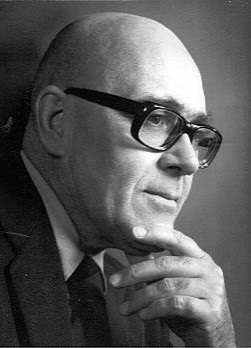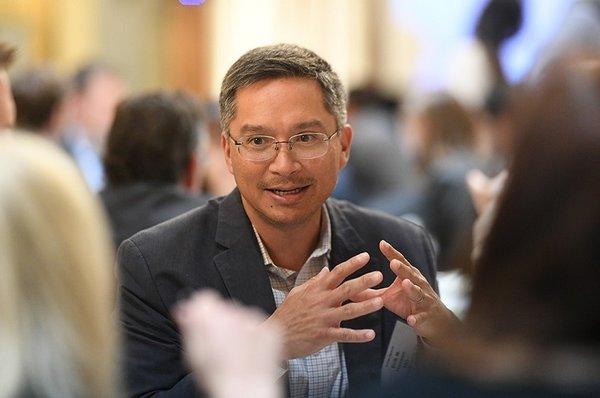SAN FRANCISCO (Dec. 11, 2019) -- The UCSF Dept. of Orthopaedic Surgery is pleased to announce that Erik N. Hansen MD, a hip and knee surgeon and section chief of the Division of Arthritis and Joint Replacement, has been appointed as the William R. Murray Endowed Chair in Orthopaedic Surgery.
As holder of the Chair, Dr. Hansen will support the research and teaching related to the Department’s vision: Pioneering musculoskeletal discovery and innovative care to transform lives. The Chair was established in memory of Dr. Murray, the Department’s fourth chair and a pioneer in developing innovative solutions in the field of orthopaedics.
“I am both honored and grateful for this opportunity afforded me by Dr. Murray -- a true innovator and leader in the field of arthroplasty,” Dr. Hansen said.
“Through his foresight and generosity, his legacy will continue to live on as we grow the Division of Arthroplasty at UCSF into a Center of Excellence for the management of Periprosthetic Joint Infection, a national leader in the convergence of Technology and Digital Health in Orthopaedics and a pioneer in developing innovative approaches in musculoskeletal education.”
"I am extremely confident that Dr. Hansen’s accomplishments in leadership, education, and research will position him well for continuing Dr. Murray’s legacy,” said Thomas P. Vail, MD, chair of the UCSF Department of Orthopaedic Surgery. “I look forward to the excellent work he will accomplish in the pursuit of advancing orthopaedics at UCSF.”
About Dr. William R. Murray

Dr. William Randolph Murray, MD (1924 – 2008) served as Professor and Chairman Emeritus of the UCSF Department of Orthopaedic Surgery.
Dr. Murray was a graduate of St. Patrick's College in Ottawa, and McGill University School of Medicine, Montreal. He completed his internship and surgical residency at the Detroit Receiving Hospital and his orthopaedic residency at UCSF. In 1958, he joined the faculty of the UCSF Dept. of Orthopaedic Surgery, at which time he spent the next 32 years of his medical career. In 1976, he was appointed Chair of the Department, a position he held until his retirement in 1990.
Dr. Murray distinguished himself in the 60’s and 70’s with numerous surgical firsts and breakthroughs. In 1965, he used Harrington rods to straighten spinal curvatures in young patients with scoliosis. In 1968, he was the first surgeon in the West to perform a total hip replacement using bone cement. He performed the first total elbow replacement and the first total knee replacements in this area in 1971, and carried out the first total ankle replacement in 1973.
In addition to these innovative procedures, Dr. Murray had a very active orthopaedic practice, while he taught trainees and did large amounts of research (He was a member of 27 scientific medical societies.). During Dr. Murray's tenure, the orthopaedic department became a center for total joint replacement surgery.
About Dr. Erik N. Hansen
A native San Franciscan, Dr. Hansen is an Associate Professor of Orthopedic Surgery, who specializes in adult total joint replacement, specifically primary and revision hip and knee replacement.
Completing his undergraduate education in Human Biology at Stanford University, he went on to earn his medical degree from UCSF, where he also completed his residency in orthopaedic surgery. Dr. Hansen then completed a fellowship in Adult Reconstruction at the Rothman Institute at Thomas Jefferson University in Philadelphia.
In 2012, Dr. Hansen returned to the Bay Area at which time he joined the Department as an assistant clinical professor of orthopaedic surgery, as well as concurrently serving as a clinical professor at the Veterans Administration. In recognition of his consistent commitment to education, Dr. Hansen was selected in 2015 to become the Fellowship Director for the Department’s arthroplasty program.
Dr. Hansen’s clinical and research efforts are focused on mitigating complications, including periprosthetic joint infection, following joint replacement surgery. His goals are to increase collaborate efforts with other local, regional, and national arthroplasty divisions to improve clinical care pathways, optimize cost effective strategies, and conduct high quality multicenter research.
###



